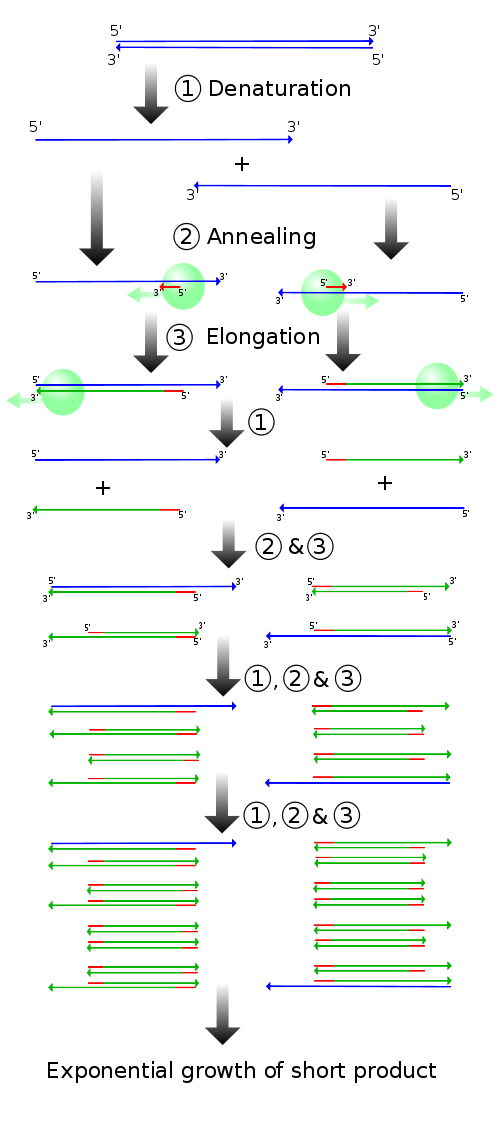Team:Cambridge/Protocols/PCR
From 2011.igem.org
(Created page with "{{Template:Team:Cambridge/CAM_2011_TEMPLATE_HEAD}} ==Polymerase Chain Reaction (PCR)== The goal of the PCR protocol is to amplify a section of DNA which is of interest in order ...") |
(→Practice) |
||
| Line 32: | Line 32: | ||
|} | |} | ||
| - | Only the primers and the DNA template are specific to the reaction, and thus the remaining reagents can be made as a 'Master Mix' in order to reduce | + | Only the primers and the DNA template are specific to the reaction, and thus the remaining reagents can be made as a 'Master Mix' in order to reduce the need to repeatedly measure small volumes for each tube. |
| + | |||
| + | As with all enzyme containing reagents, the master mix should be kept in the freezer and small aliquots thawed when needed. | ||
The remainder of the reaction is usually handled automatically by a PCR machine. It is common to perform an [[electrophoresis | Team:Cambridge/Protocols/Electrophoresis]] in order to separate out the correct DNA after PCR. | The remainder of the reaction is usually handled automatically by a PCR machine. It is common to perform an [[electrophoresis | Team:Cambridge/Protocols/Electrophoresis]] in order to separate out the correct DNA after PCR. | ||
Revision as of 10:24, 8 July 2011
Contents |
Polymerase Chain Reaction (PCR)
The goal of the PCR protocol is to amplify a section of DNA which is of interest in order to carry out some operations on the section (e.g. insertion into a plasmid, sequencing, etc). PCR allows the amplification of a section of a single molecule into a large number of identical molecules (~10^9).
Theory

The reaction works by the annealing of primers to single stranded DNA, which are extended by DNA polymerase. By repeating the process, the section of DNA between the primers is amplified.
TODO: More Here!
Practice
The PCR reaction should contain the following reagents:
| Name | Quantity |
|---|---|
| De-Ionized Water | 35.5 μL |
| 5x Buffer | 10 μL |
| DNTPs | 1 μL |
| Forward Primer | 1 μL |
| Reverse Primer | 1 μL |
| DNA Template | 1 μL |
| Polymerase | 0.5 μL |
Only the primers and the DNA template are specific to the reaction, and thus the remaining reagents can be made as a 'Master Mix' in order to reduce the need to repeatedly measure small volumes for each tube.
As with all enzyme containing reagents, the master mix should be kept in the freezer and small aliquots thawed when needed.
The remainder of the reaction is usually handled automatically by a PCR machine. It is common to perform an Team:Cambridge/Protocols/Electrophoresis in order to separate out the correct DNA after PCR.
Safety
No bacteria are used during the reaction, and this there is little or no biological hazard. However, it is important to observe correct laboratory procedure and wear appropriate clothing and gloves. PCR occurs at high temperature, and this may present a risk, depending on the PCR machine employed.
 "
"
